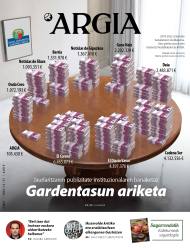Proposing homes without cooking can be a provocation and a revolution. This is what the Catalan architect Anna Puigjaner says in her research. The kitchen is an important place for the reflection of contemporary houses; from the gender review, the location of the space house is the expression of what daily food does, whether it is a woman or place of the maid. The fusion of kitchen, living room and dining room is not a contemporary valuation solution of the kitchen, but a reduction in the area of the households to obtain a more profitable product. However, open cooking entails a redefinition of the relational space of the house, making food preparation a more social and showy action.
If we had houses without kitchens, we would also feed through community kitchens, leaving household chores like a public service. This is how New York City was organized in the 1929 crisis to address the need for housing. In some territories of the planet, Québec, Mexico, Lima, Singapore. Organized by governments or arising from the population, community kitchens can assume the feeding of a neighborhood, with low-priced meals with local products, replacing the home kitchen with the neighborhood kitchens.
A small contribution to the reflection of the strike of 30 November. In Japan there is a boom in codomo community kitchens which, in addition to feeding, play a role of community surveillance. The community kitchens initiative was part of a team of women and retired cooks. The association built a large kitchen and table in the neighborhood and, aware that many children in the neighborhood spent the afternoon alone and undernourished, were invited to meet at the round table in the afternoon to expand knowledge, feed and cooperate. This initiative of community surveillance revolutionizes the life of the neighborhood, asks for the kitchen function of the house and opens a way to the conflict of multiple aspects of care.
Bidali zure iritzi artikuluak iritzia@argia.eus helbide elektronikora
ARGIAk ez du zertan bat etorri artikuluen edukiarekin. Idatzien gehienezko luzera 4.500 karakterekoa da (espazioak barne). Idazkera aldetik gutxieneko zuzentasun bat beharrezkoa da: batetik, ARGIAk ezin du hartu zuzenketa sakona egiteko lanik; bestetik, egitekotan edukia nahi gabe aldatzeko arriskua dago. ARGIAk azaleko zuzenketak edo moldaketak egingo dizkie artikuluei, behar izanez gero.
Goizean jaiki orduko hasten dira desegokitasunak. Beharbada lotarako erabili duzun lastaira ere ez zen egokiena. Baina, ezin ba idatzi desegoki sentiarazten nauten guztiez. Horregatik, udaberriko ekinozioa –egunaren eta gauaren arteko oreka– dela eta, oraindik ere,... [+]
Ez da gauza berria politikari profesionalak gizarteko arazoak estaltzeko ahaleginetan ibiltzea. Azkenaldian Denis Itxaso -EAEko Etxebizitza sailburua- entzun dugu etxegabetzeei garrantzia kenduz eta aditzera emanez gurean bazterreko fenomenoa direla; eta Begoña Alfaro... [+]
Antropozentrismoaren aldaera traketsena eurozentrismoa izan zen. Europako mendebaldea, geografikoki, Kontinente Euroasiarraren penintsula txiki bat besterik ez da, baina lau mende luzez gertaera demografiko, teknologiko eta ideologiko batzuk zirela medio, bazter horretako... [+]
Badakizuenok badakizue, beste gauza asko bezala, euskararen aldeko borrokan ere politikoek, eragile batzuek eta hedabideek beraien antzezlana saldu nahi digutela, benetakoa balitz bezala.
Lehen urtean pozik jaso nuen, "Euskaraldi" hau. Zer edo zer zen, ezer ez zegoela... [+]
Euskarak, mendez mende, zapalkuntza sistematikoa jasan du, eta oraindik ere borrokan dabil egunerokoan bere leku duina aldarrikatzeko. Hizkuntza baten desagerpena ez da inoiz berez gertatzen; planifikazio politiko eta sozialak eragiten du zuzenean. Euskaldunoi ukatu egin izan... [+]
Oldarraldia ari du EAEko administrazioa euskalduntzeko erabakien aurka, berriz ere, enegarren aldiz. Oraingoan berrikuntza eta guzti, espainiar epaitegiak eta alderdi eta sindikatu antieuskaldunak elkarlanean ari baitira. Ez dira izan akats tekniko-juridikoak zuzentzeko asmoz... [+]
Igande gaua. Umearen gelako atea itxi du, ez guztiz. Ordenagailu aurrean esertzeko momentua atzeratu nahi du. Ordu asko aurretik. Zazpietan jaiki da, eta, bihar ere, astelehena, hala jaikiko da. Pentsatu gabe ekiten badio, lortu dezake gauak pisu existentzialik ez izatea. Akats... [+]
Naomiren etxeko eskailerak igotzen ari dela datorkion usainak egiten dio memorian tiro. "Ez da sen ona, memoriaren eta emozioaren arteko lotura da. Baldintzapen klasikoa", pentsatzen du Peterrek bere golkorako Intermezzo-n, Sally Rooney irlandarraren azken eleberrian... [+]
Joan den urte hondarrean atera da L'affaire Ange Soleil, le dépeceur d'Aubervilliers (Ange Soleil afera, Aubervilliers-ko puskatzailea) eleberria, Christelle Lozère-k idatzia. Lozère da artearen historiako irakasle bakarra Antilletako... [+]
Aspaldi pertsona oso zatar bat ezagutu nuen, urrun izatea komeni den pertsona horietako bat. Bere genero bereko pertsonengana zuzentzeko, gizonezkoengana, “bro” hitza erabili ohi zuen. Edozein zapaltzeko prest zegoen, bere helburuak lortzeko. Garai hartatik hitz... [+]
2020. urteko udaberrian lorategigintzak eta ortugintzak hartutako balioa gogoan, aisialdi aktibitate eta ingurune naturalarekin lotura gisa. Terraza eta etxeko loreontzietan hasitako ekintzak hiriko ortuen nekazaritzan jarraitu du, behin itxialdia bareturik. Historian zehar... [+]
Hurrengo ariketa egin ezazu zure lantokian, euskaltegian edo gimnasioan:
Altxa eskua Minneapoliseko George Floyd nor den dakizuenok.
Altxa eskua Madrilgo Mame Mbaye nor den dakizuenok.
Altxa eskua Barakaldoko X nor den dakizuenok.
Mame Mbaye manteroa duela zazpi urte... [+]
2022ko ekainaren 7an, Directa-k serie luze bateko lehen polizia infiltratuaren kasua argitaratu zuen. Martxoaren 5ean, Belen Hammad fikziozko izena erreta geratu zen, polizia-argotean dioten bezala. Jada hamar dira Directa, El Salto eta El Diario-k azken hiru urteetan argitara... [+]
Horra Libération egunkariak berriki argitaratu duen idazkia:
“Bayonne” bukatu da, Libérationek “Baiona” idatziko du
Hiri baten izenaren erabilpena ohiturazkoa delarik, egunkari batean izen horren erabilpena aldatzea zaila da. Alta, irakurleen... [+]




















